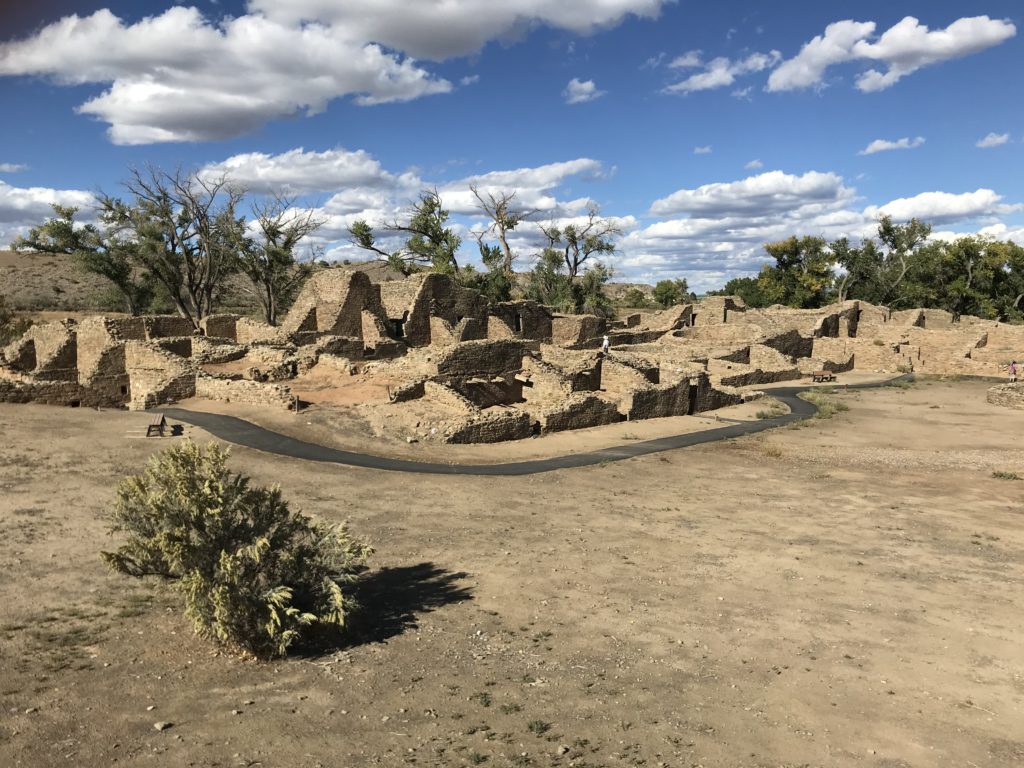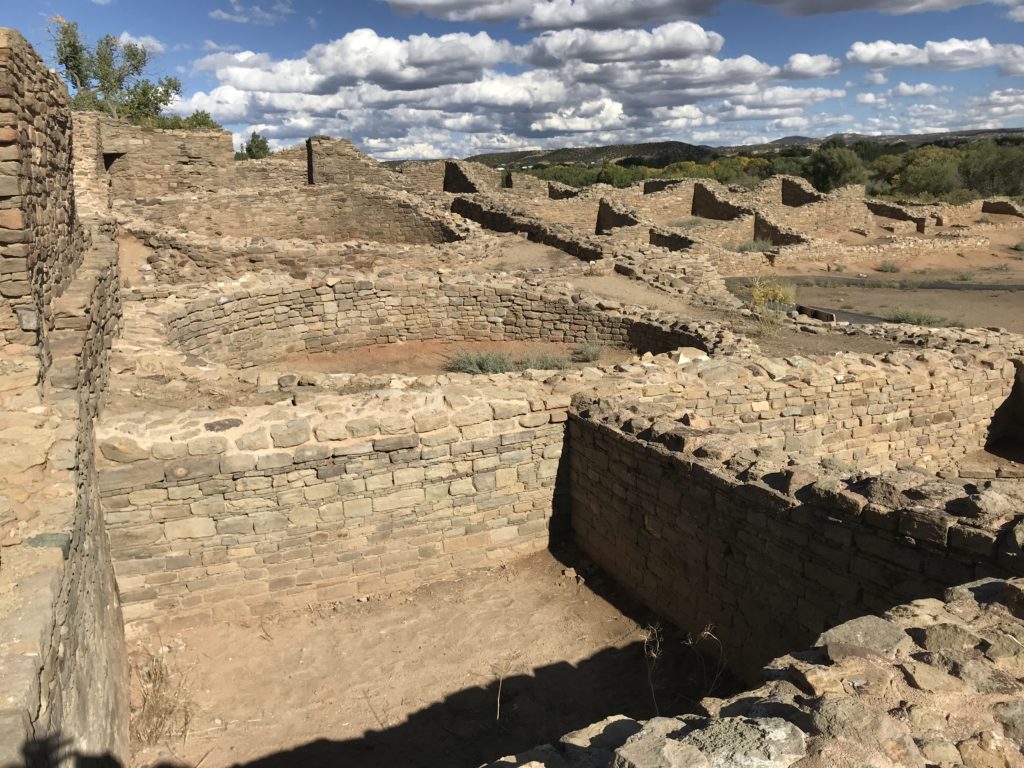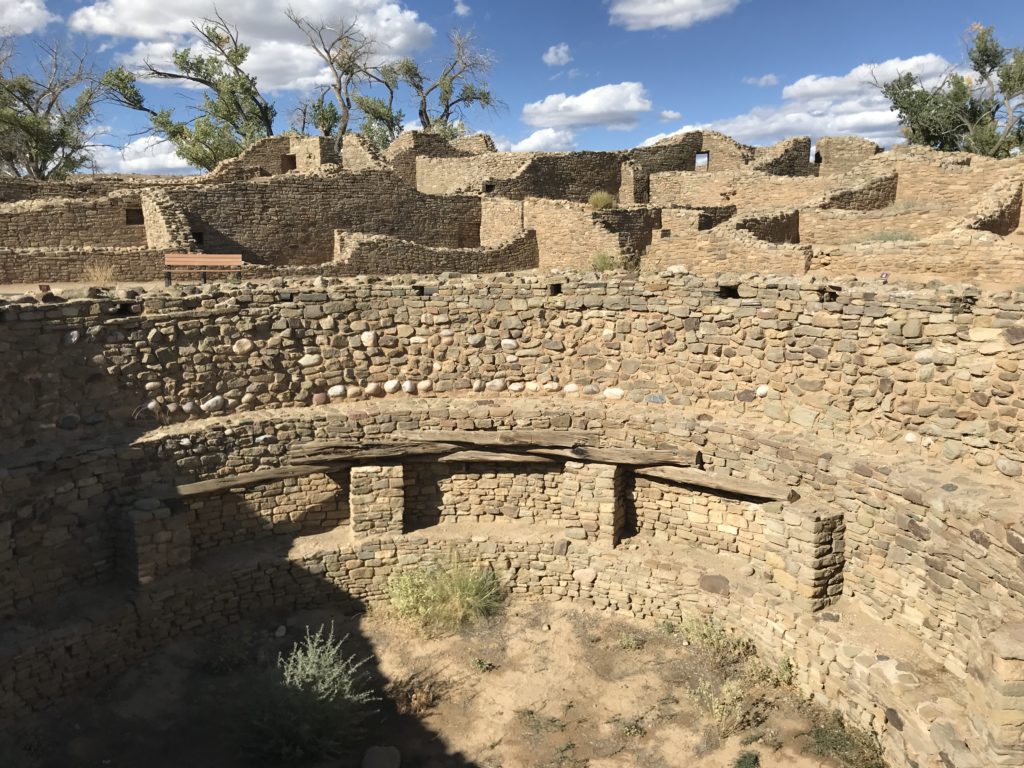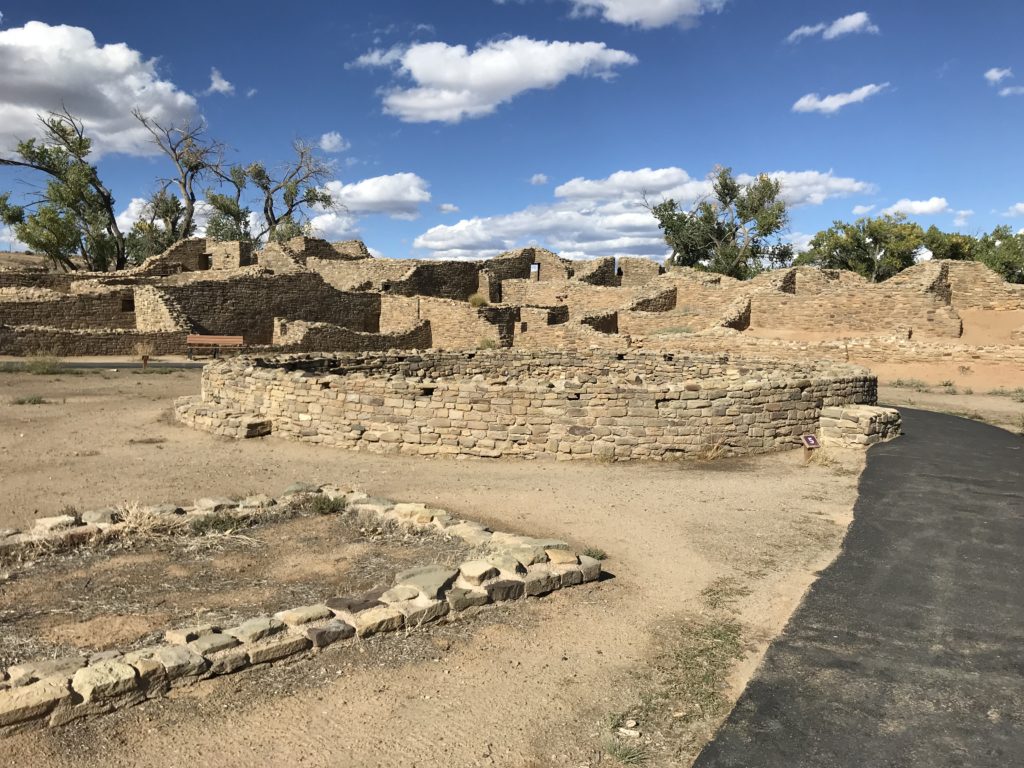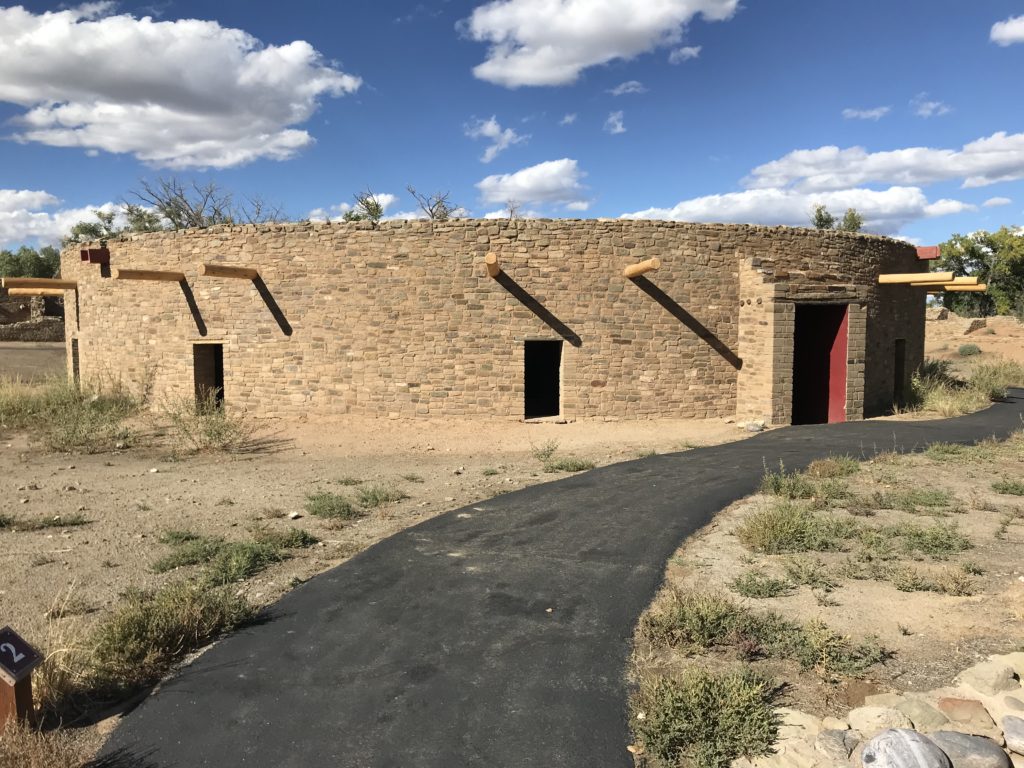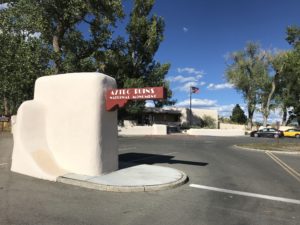 Aztec Ruins National Monument is another Ancestral Puebloan site. But it is a little different from the ones Tom and I had previously seen. The other ruins were dispersed, with some of them in out of the way places, such as cliffs or canyons. They represent the later Ancestral Puebloan period when the ancient people were protecting water sources from capture by invading forces.
Aztec Ruins National Monument is another Ancestral Puebloan site. But it is a little different from the ones Tom and I had previously seen. The other ruins were dispersed, with some of them in out of the way places, such as cliffs or canyons. They represent the later Ancestral Puebloan period when the ancient people were protecting water sources from capture by invading forces.
Aztec Ruins National Monument represents an earlier period in the Ancestral Puebloan period. During the years from 1100 to 1200, the Ancestral Puebloan people were building a rich culture. They lived in villages with a thousand people. Farms surrounded their homes which were linked together room after room. In the center of every group of homes stood a kiva, a round room used for ceremonies. At various times of year people would go out to hunt or farm. Then they would come together for the winter or for special religious festivals. Many of their structures had astronomical or celestial orientations.
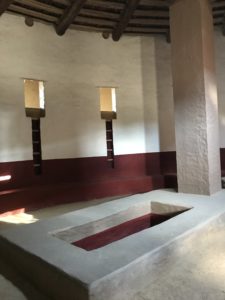
Aztec Ruins is located in the town of Aztec New Mexico. The Animus River forms a border along one side of the dwellings. The river provided a constant source of water and irrigation for the people who lived at Aztec Ruins. The ruins consist of 400 rooms, and you can wander around in the rooms, ducking through short doorways. The monument has a walking trail through the excavated ruins that also takes you up to an unexcavated section. We were impressed by how big the village is and the number of rooms it had.
A restored Great Kiva sits in the center of Aztec Ruins National Monument. It is the largest building of its kind – one of the few kivas that has been restored. You can get a sense of the people who would gather here for ceremonies of various kinds. The sun coming through various windows helps keep a calendar of the seasons.
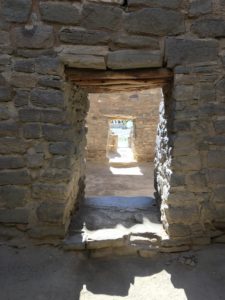
Tom and I walked around the grounds and spent some time inside the Visitors Center. The Visitors Center was once a house, built from wood and stones taken from the Aztec Ruins site. We watched the movie and looked through the museum.
Today Aztec Ruins National Monument is listed on the National Register of Historic Places. It is also listed as a World Heritage Site as part of the Chaco Culture. The monument is on New Mexico’s Trail of the Ancients Scenic Byway.

